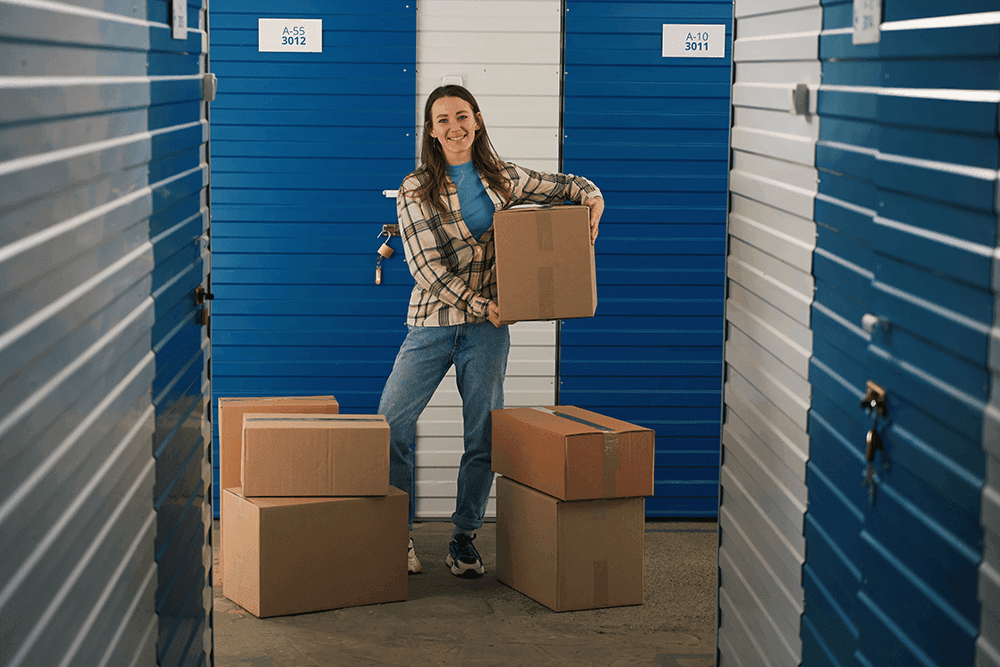
 Storage Tips
Storage TipsLong Term Logo Storage Tips
Anyone that’s purchased Lego sets knows a few things. First, they are expensive, with some sets costing well over $100. Second, they often don’t stay together and need to be stored, often not put together, in a way that allows them to last for the next generation. There’s nothing quite like trying to recreate a classic car or a superhero playset and finding a missing piece. Proper long-term storage for Legos has to take into account the actual condition of the little bricks. Many of these sets can grow in value when taken care of, which means they could become sentimental and valuable investments.
There are a few effective ways to improve the storage of Legos to ensure they last. Here’s what you need to know.
Tips for Long-Term Storage
Here are a few simple things you can do to protect your Legos and store them for years to come with great results.
- If you have individual Lego pieces that need to be stored, you can place them in plastic bags. This is a great way to keep the Legos separated between sets. Place the instruction manual in the plastic bag as well.
- You can keep them in the boxes they’ve come to you in, but if you want to protect the boxes themselves, you’ll need to take a few extra steps (more on that in a moment).
- To keep your items protected long-term, keep them in watertight containers, like totes. This helps minimize the risk of moisture build up, dust, debris, or lost pieces.
Keep sets together as best as possible. That includes keeping the instructions and boxes with the set so you can see what you are building.
How Do You Keep Legos from Cracking?
Though Legos are built to last and have some exceptional quality most of the time, there is a risk that they could crack. A single crack in a small little brick can lead to a lost set.
Most often, Legos crack from wear and tear, or they may warp even slightly due to light or heat, which then makes them vulnerable to bending and warping. If you wash the Legos, that moisture can be problematic unless they fully dry out.
When it comes to long-term storage, Legos can also crack if they are under significant weight. If they are caught under a heavy box, for example, that can create chips or small changes in the plastic itself.
If you have the model assembled for a long time, that can lead to some warping of the material over time. This can happen due to changes in humidity levels or swings in temperatures that are significant. Fractures and cracks are more likely to happen in these situations.
How Do You Keep Lego Boxes in Good Condition?
Lego boxes are just as valuable as the little bricks within them. These are simple boxes that will wear down over time. There are a few things you can do to protect them and minimize any obvious risks.
- The more you touch the box, the more oils transfer from your hands onto the surface. Avoid touching and handling them.
- Store them on a shelf out of the way of anyone touching them. That includes children who tend to be more likely to cause damage.
- Always keep them in a dry location. Humidity is a big factor in damage to boxes. Keep the temperature within the space between 30 and 50 percent humidity for the optimal level of protection.
- If you have more than one box that’s empty, store them one inside the other. This helps the box to hold its shape long term.
- If you do not have a lot of space, consider flattening the boxes carefully, avoiding any damage to the edges or seams. If you do this, you can then store them in a plastic tote that’s watertight.
Do Legos Get Damaged in the Cold?
Cold temperatures can lead to some damage to Lego bricks. Legos are made of a material called ABS. Most of the time that is a very durable plastic that does not warp easily or suffer damage from cracks. However, when the temperatures are very cold – think winter conditions in the attic of your home – they can become brittle. This increases the risk that the Legos will chip.
It is not common for Legos to suffer any significant damage from cold temperatures. So even if you put your model together, it is not likely that it will suffer much damage from cold temperatures as long as they are not extreme.
Do Legos Get Damaged in the Heat?
Heat can be a problem for Legos. It is not likely that the Legos will melt under normal conditions – even on a 100 degree day, you are not likely to see your Legos suffer significant damage. However, in extreme heat, they can suffer damage, including during a fire or in high-heat, high-humid conditions. The melting temperature of ABS is 221 degrees Fahrenheit, which is significantly higher than most will come into contact with during normal storage.
Lego storage doesn’t have to be a challenge if you take steps to stay organized from the start. You don’t want to have to sort through thousands of pieces that are meant for separate sets. Create a storage process early on for your collections to make it easy to keep them in great condition for years to come.
We're Your Storage Solution!
Storage Rentals of America is your convenient self-storage solution. So come into our office or give our storage experts a call at 1-800-457-5678. Our call center is available 7 days a week and can help determine which storage unit size best fits your storage needs.



